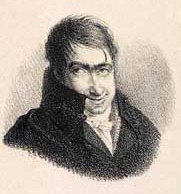Christian David Gebauer on:
[Wikipedia]
[Google]
[Amazon]

 Christian David Gebauer (15 October 1777 – 15 September 1831) was a Danish animal and landscape painter. He was also known for
Christian David Gebauer (15 October 1777 – 15 September 1831) was a Danish animal and landscape painter. He was also known for
Christian David Gebauer
Kunstindeks Danmark & Weilbach Kunstnerleksikon His primary inspiration, however, came from the
ArtNet: More works by Gebauer.
from the Dansk Biografisk Lexikon @

 Christian David Gebauer (15 October 1777 – 15 September 1831) was a Danish animal and landscape painter. He was also known for
Christian David Gebauer (15 October 1777 – 15 September 1831) was a Danish animal and landscape painter. He was also known for etching
Etching is traditionally the process of using strong acid or mordant to cut into the unprotected parts of a metal surface to create a design in intaglio (incised) in the metal. In modern manufacturing, other chemicals may be used on other types ...
s.
Biography
Gebauer was born in Neusalz an der Oder. His father was superintendent of theMoravian Church
, image = AgnusDeiWindow.jpg
, imagewidth = 250px
, caption = Church emblem featuring the Agnus Dei.Stained glass at the Rights Chapel of Trinity Moravian Church, Winston-Salem, North Carolina, United States
, main_classification = Proto-Prot ...
. When he was still very young, his family moved to Christiansfeld
Christiansfeld, with a population of 2,977 (1 January 2022), is a town in Kolding Municipality in Southern Jutland in Region of Southern Denmark. The town was founded in 1773 by the Moravian Church and named after the Danish king Christian VII. ...
in Schleswig
The Duchy of Schleswig ( da, Hertugdømmet Slesvig; german: Herzogtum Schleswig; nds, Hartogdom Sleswig; frr, Härtochduum Slaswik) was a duchy in Southern Jutland () covering the area between about 60 km (35 miles) north and 70 km ...
. Although his father had wanted him to become a priest, he contracted measles at the age of three and his hearing was permanently damaged.
After he displayed some talent for drawing, it was decided that he should enroll at the Royal Danish Academy of Fine Arts
The Royal Danish Academy of Fine Arts ( da, Det Kongelige Danske Kunstakademi - Billedkunst Skolerne) has provided education in the arts for more than 250 years, playing its part in the development of the art of Denmark.
History
The Royal Dan ...
, where he studied with C.A. Lorentzen.Erik MortensenChristian David Gebauer
Kunstindeks Danmark & Weilbach Kunstnerleksikon His primary inspiration, however, came from the
Dutch Masters
Dutch Golden Age painting is the painting of the Dutch Golden Age, a period in Dutch history roughly spanning the 17th century, during and after the later part of the Eighty Years' War (1568–1648) for Dutch independence.
The new Dutch Repub ...
. He exhibited his student works, a mix of ink drawings and oils, and captured the attention of Nicolai Abildgaard. Shortly after, Count Reventlow became his sponsor.
During 1807, the beginning of the Gunboat War
The Gunboat War (, ; 1807–1814) was a naval conflict between Denmark–Norway and the British during the Napoleonic Wars. The war's name is derived from the Danish tactic of employing small gunboats against the materially superior Royal Na ...
aroused his interest in battle painting, so he applied for Royal travel benefits, which were eventually granted. In 1813, he used some of his money to travel to Germany, where he witnessed the aftermath of the Battle of Dresden. He was particularly attracted to the captive Cossacks and their horses, which resulted in a number of drawings and etchings.
He was named a member of the Royal Academy in 1815. Two years later, he was given an apartment at Charlottenborg Palace
Charlottenborg Palace ( da, Charlottenborg Slot) is a large town mansion located on the corner of Kongens Nytorv and Nyhavn in Copenhagen, Denmark. Originally built as a residence for Ulrik Frederik Gyldenløve, it has served as the base of the ...
and an annual pension. He lived there for many years and painted at several Royal properties throughout Denmark, creating architectural works (such as overdoor
An "overdoor" (or "Supraporte" as in German, or "sopraporte" as in Italian) is a painting, bas-relief or decorative panel, generally in a horizontal format, that is set, typically within ornamental mouldings, over a door, or was originally intend ...
s) in addition to his oils.
In 1826–27, he made a trip to Bavaria, but the journey proved to be too taxing for his steadily declining health. While staying in Munich, he received news that his wife had died. Upon returning, he learned that three of his grown children had also died. He then relocated to Aarhus, where he lived with a surviving daughter and her husband, and opened a drawing school. In 1830, he was appointed a Professor, but died without assuming his duties.
He died on 15 September 1831, in Aarhus.
Personal life
He was married in 1807 to Mariane Høegh (ca. 1780–1827). The composer Johan Christian Gebauer was their son.References
External links
ArtNet: More works by Gebauer.
from the Dansk Biografisk Lexikon @
Project Runeberg
Project Runeberg ( sv, Projekt Runeberg) is a digital cultural archive initiative that publishes free electronic versions of books significant to the culture and history of the Nordic countries. Patterned after Project Gutenberg, it was founded ...
{{DEFAULTSORT:Gebauer, Christian David
1777 births
1831 deaths
People from Nowa Sól
18th-century Danish painters
18th-century male artists
Danish male painters
19th-century Danish painters
Royal Danish Academy of Fine Arts alumni
Animal artists
Burials in Aarhus City Hall Park
19th-century Danish male artists